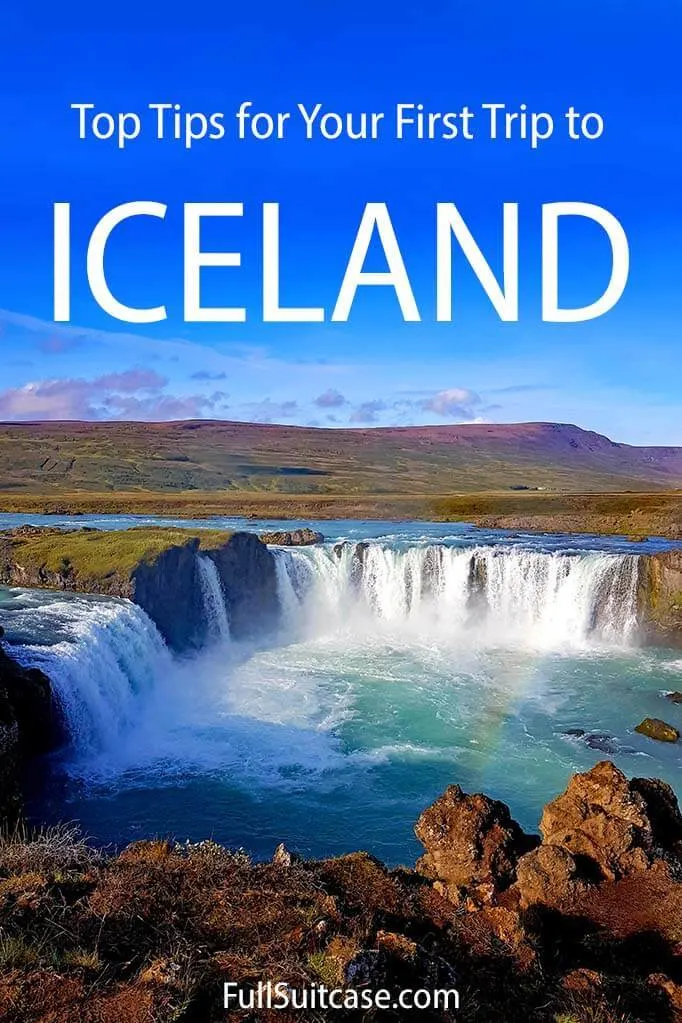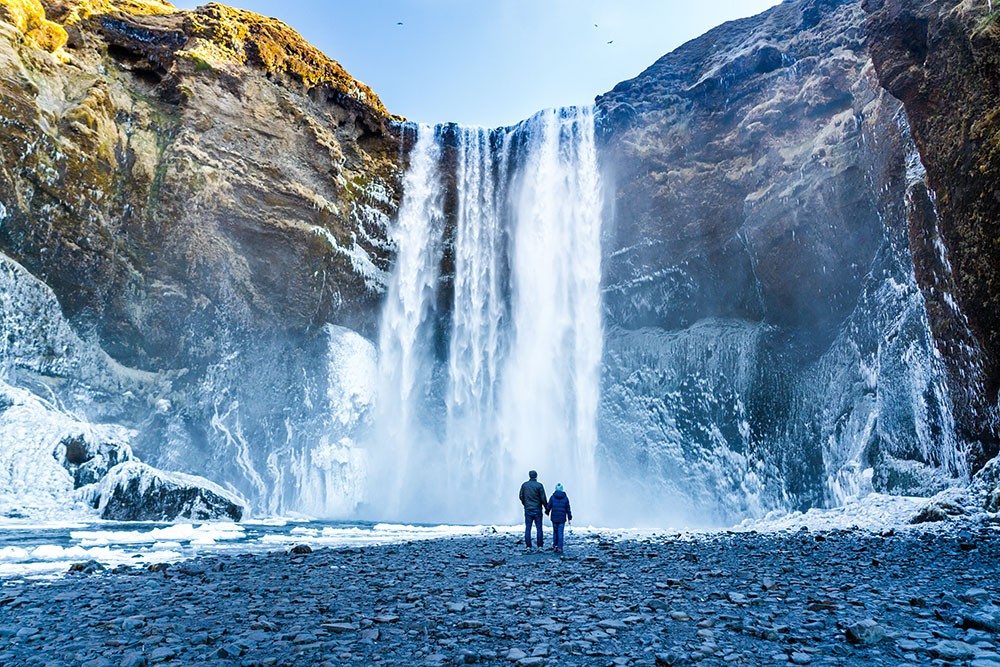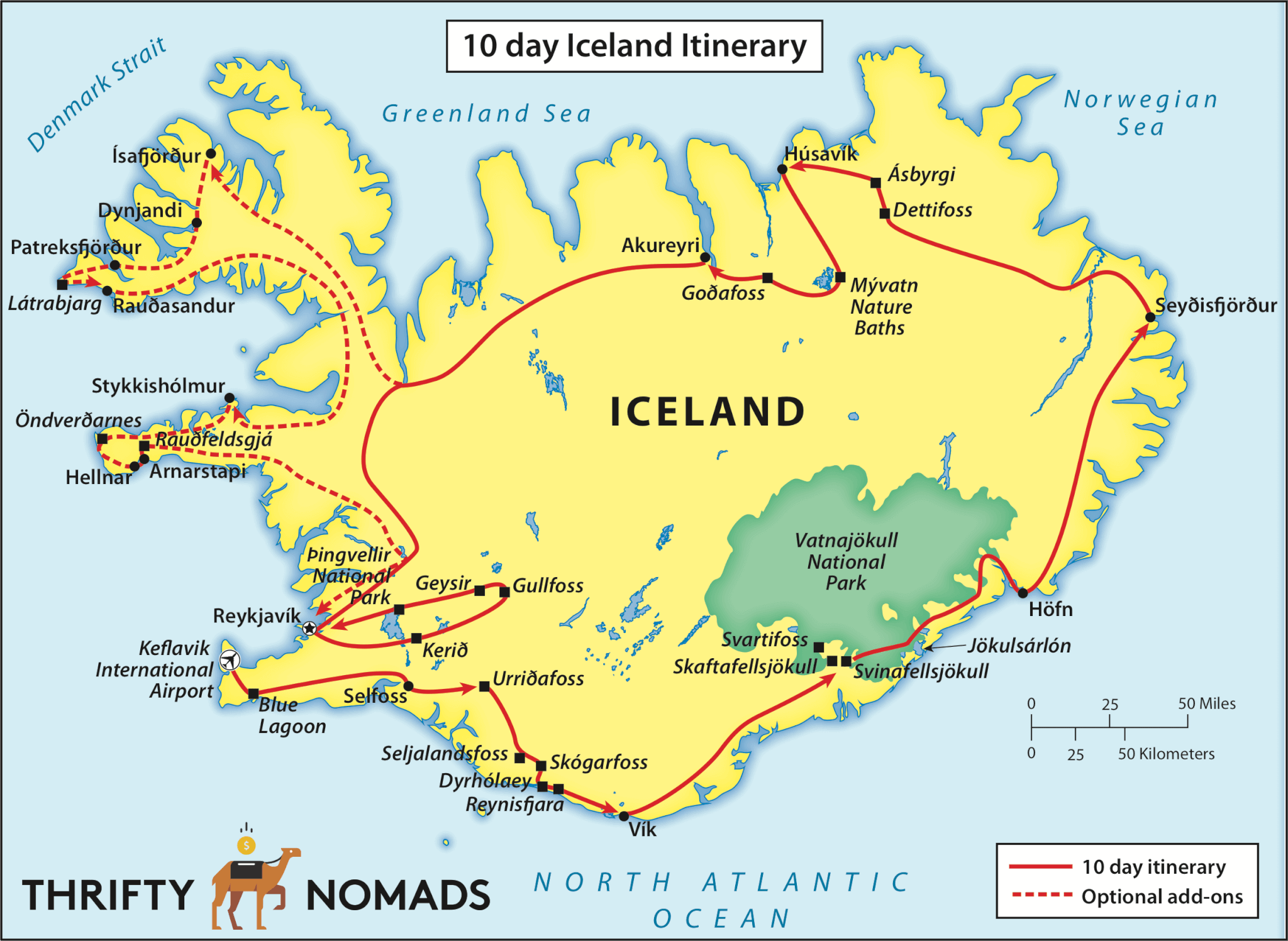
Iceland, a land sculpted by volcanic fury and glacial artistry, beckons with an otherworldly allure. From cascading waterfalls and steaming geysers to the ethereal dance of the Northern Lights, this island nation offers an adventure unlike any other. But with its unique geography and distinct culture, planning a trip to Iceland can feel daunting. Fear not, intrepid traveler! This comprehensive guide will equip you with everything you need to embark on an unforgettable journey to the Land of Fire and Ice.
A Glimpse into Iceland’s Storied Past
Iceland’s history is as dramatic as its landscapes. Settled by Norsemen around the late 9th century, it was initially a land of chieftains and self-governance. The Althing, established in 930 AD, is one of the oldest parliamentary institutions in the world, a testament to Iceland’s early democratic spirit. Christianity was adopted peacefully around the year 1000, marking a significant cultural shift.

Related Articles about The Land of Fire and Ice: Your Ultimate Guide to Traveling Iceland:
- Nepal: A Journey to the Roof of the World and Beyond
- Phuket: The Andaman Pearl – Your Ultimate Travel Guide
- Hungary: A Tapestry of History, Beauty, and Unforgettable Experiences
- Unveiling the Philippines: A Guide to Paradise Found
- Bangkok: A Symphony of Senses – Unveiling the Top Attractions of the City of Angels
For centuries, Iceland endured periods of hardship, including famines, volcanic eruptions, and foreign rule, particularly under Danish dominion. The 20th century saw a surge in the fight for independence, culminating in full sovereignty in 1944. Today, Iceland is a modern, progressive nation with a strong sense of national identity, deeply connected to its Viking heritage and rich folklore.
Top Attractions: Where Nature’s Masterpieces Unfold
Iceland’s primary draw is its unparalleled natural beauty. Prepare to be mesmerized by these iconic sights:
-
The Golden Circle: This popular tourist route is a trifecta of natural wonders easily accessible from Reykjavík.
- Thingvellir National Park: A UNESCO World Heritage site, Thingvellir is where the North American and Eurasian tectonic plates meet, creating a dramatic rift valley. It’s also the historical site of the Althing.
- Geysir Geothermal Area: Witness the explosive power of Strokkur geyser, which erupts every 5-10 minutes, shooting boiling water high into the air. The original Geysir, from which all others derive their name, is largely dormant but still a fascinating sight.
- Gullfoss Waterfall: This magnificent two-tiered waterfall plunges into a rugged canyon, creating a breathtaking spectacle of mist and rainbows.

-
South Coast Wonders: The southern stretch of Iceland is a treasure trove of dramatic scenery.
- Seljalandsfoss and Skógafoss Waterfalls: Seljalandsfoss offers the unique experience of walking behind its cascading curtain of water, while Skógafoss is a powerful, wide waterfall with a legendary treasure hidden behind it.
- Reynisfjara Black Sand Beach: Famous for its striking black volcanic sand, basalt columns (Reynisdrangar), and powerful waves, this beach is both beautiful and a reminder of the raw power of the Atlantic. Exercise extreme caution due to unpredictable sneaker waves.
- Jökulsárlón Glacier Lagoon and Diamond Beach: Witness icebergs calved from the Breiðamerkurjökull glacier floating in a serene lagoon. Across the road, Diamond Beach is where smaller ice fragments wash ashore, glistening like diamonds on the black sand.
-
The Blue Lagoon: A geothermal spa renowned for its milky-blue, mineral-rich waters. While popular and a bit of a splurge, it’s an iconic Icelandic experience for relaxation and rejuvenation.
-
Northern Iceland’s Enchantments: Venture north for a different flavor of Iceland’s magic.
- Lake Mývatn Area: This region is a hotbed of geothermal activity, featuring pseudo-craters, bubbling mud pots, and lava formations.
- Dettifoss Waterfall: Europe’s most powerful waterfall, Dettifoss is a thunderous force of nature that will leave you awestruck.
- Akureyri: The charming "Capital of the North," Akureyri offers a picturesque harbor, botanical gardens, and a vibrant cultural scene.
-
The Snaefellsnes Peninsula: Often called "Miniature Iceland," this peninsula boasts a diverse range of landscapes, from volcanic craters and lava fields to charming fishing villages and dramatic coastlines, all dominated by the majestic Snæfellsjökull glacier.
Travel Tips for a Smooth Icelandic Adventure
To make the most of your trip, consider these essential tips:
- Book in Advance: Iceland is a popular destination, especially during peak seasons. Accommodation, car rentals, and popular tours can book up months in advance.
- Pack Layers: The Icelandic weather is notoriously unpredictable and can change rapidly. Pack waterproof and windproof outer layers, thermal underwear, fleece, hats, gloves, and sturdy waterproof hiking boots.
- Embrace the Daylight (or Lack Thereof): Summer offers nearly 24 hours of daylight (Midnight Sun), perfect for extended exploration. Winter brings shorter days but the magical possibility of witnessing the Northern Lights.
- Respect Nature: Iceland’s natural environment is fragile. Stay on marked paths, do not disturb wildlife, and never drive off-road. Leave no trace.
- Budget Accordingly: Iceland can be an expensive destination. Factor in costs for accommodation, food, transportation, and activities. Consider self-catering options and packing some non-perishable snacks.
- Learn a Few Icelandic Phrases: While most Icelanders speak excellent English, learning greetings like "Hæ" (Hi) and "Takk" (Thank you) is appreciated.
- Stay Hydrated: Iceland has some of the purest drinking water in the world. Carry a reusable water bottle and refill it often.
- Credit Cards are King: Credit and debit cards are widely accepted everywhere. Carrying large amounts of cash is generally unnecessary.
- Be Prepared for the Elements: Even in summer, expect wind and rain. In winter, snow and ice are common. Always check weather forecasts and road conditions before setting out.
- Consider Travel Insurance: Given the adventurous nature of some activities and the unpredictable weather, comprehensive travel insurance is highly recommended.
Accommodation Options: From Cozy Guesthouses to Modern Hotels
Iceland offers a diverse range of accommodation to suit every budget and preference:
- Hotels: From luxurious boutique hotels in Reykjavík to comfortable roadside inns, hotels offer a wide array of amenities and services.
- Guesthouses and Bed & Breakfasts: These offer a more intimate and often budget-friendly experience, allowing you to connect with local hosts and enjoy a homey atmosphere.
- Farm Stays: Immerse yourself in rural Icelandic life by staying on a working farm. You’ll often enjoy delicious home-cooked meals and a peaceful environment.
- Hostels: A great option for solo travelers and budget-conscious adventurers, hostels provide dormitory-style rooms and private options, often with communal kitchens and social areas.
- Apartments and Vacation Rentals: Ideal for families or groups, these offer more space, privacy, and the convenience of self-catering facilities. Websites like Airbnb are popular for finding these.
- Camping: For the truly adventurous, camping is a popular option during the summer months. Numerous campsites are equipped with basic facilities. Remember to respect the environment and always camp in designated areas.
- Unique Stays: Look out for unique accommodations like glass igloos for Northern Lights viewing, converted lighthouses, or remote cabins for an unforgettable experience.
Transportation: Navigating the Island
Getting around Iceland depends on your itinerary and desired level of flexibility:
-
Car Rental: This is the most popular and recommended way to explore Iceland, offering the freedom to visit remote locations and stop at your leisure.
- 4×4 Vehicles: Essential for venturing onto F-roads (mountain roads) which are typically unpaved and often require a 4×4. These roads are usually only open during the summer months.
- Standard Cars: Suitable for the Ring Road (Route 1) and most main roads, especially outside of winter.
- Driving in Winter: Requires caution and experience with snow and ice. Winter tires are mandatory. Always check road conditions before you travel.
-
Public Transportation:
- Buses: A network of buses connects major towns and some tourist attractions. However, routes can be limited and infrequent, especially outside of summer.
- Domestic Flights: For covering long distances quickly, domestic flights connect Reykjavík with various towns across the island.
-
Guided Tours: If you prefer not to drive, numerous guided tours are available, ranging from day trips to multi-day excursions. These tours often include transportation, accommodation, and guided excursions to key attractions.
-
Hitchhiking: While possible, it’s not a reliable mode of transport for extensive travel due to lower population density and unpredictable traffic.
The Best Time to Visit Iceland: A Seasonal Symphony
Iceland’s charm shifts dramatically with the seasons, offering unique experiences throughout the year:
-
Summer (June – August):
- Pros: The most popular time to visit. Long daylight hours (Midnight Sun) allow for maximum exploration. All roads are generally open, including F-roads. Mildest weather. Abundant birdlife and blooming wildflowers.
- Cons: Highest prices for accommodation and flights. Crowds at popular attractions. Mosquitoes can be present in some areas.
-
Autumn (September – October):
- Pros: Fewer crowds than summer. Beautiful autumn colors paint the landscape. Increased chances of seeing the Northern Lights as nights lengthen. Still relatively mild weather.
- Cons: Daylight hours begin to decrease. Some F-roads may close towards the end of October. Weather can become more unpredictable.
-
Winter (November – March):
- Pros: The prime season for Northern Lights viewing. Magical snowy landscapes and ice caves. Fewer tourists and lower prices (though still not cheap). Cozy atmosphere.
- Cons: Short daylight hours. Cold temperatures and potential for snowstorms. Many F-roads are closed. Driving can be challenging. Some attractions may have limited access.
-
Spring (April – May):
- Pros: Increasing daylight hours. Nature awakens with returning birds and blooming flora. Fewer crowds than summer. Prices may start to decrease.
- Cons: Weather can be unpredictable, with lingering snow and ice. Some F-roads remain closed. Waterfalls may have less flow compared to summer.
Ultimately, the "best" time to visit Iceland depends on your priorities. If chasing the Northern Lights is your dream, winter is your season. If you want to explore the entire country with ease and enjoy long days, summer is ideal. For a balance of fewer crowds, beautiful scenery, and a chance at the aurora, autumn offers a compelling option.
Iceland is more than just a destination; it’s an experience that will ignite your senses and leave an indelible mark on your soul. By understanding its history, embracing its natural wonders, and planning wisely, you’re well on your way to crafting a truly unforgettable adventure in this captivating land of fire and ice. So pack your bags, open your mind, and prepare to be spellbound.





